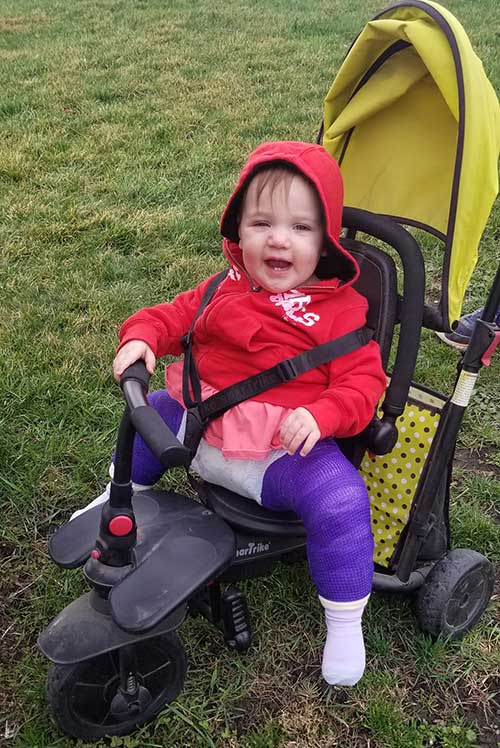Developmental Dysplasia of the Hip in Infants and Children
The pediatric orthopedic surgeons at University Hospitals Rainbow Babies & Children’s Hospital are experts at treating developmental dysplasia of the hip, or DDH, in infants, children and adolescents.
Your child’s health is important. Don’t delay care.
Offering in-person, video and telephone visits. Call today to see which option is right for you. 216-844-7200
 What is Hip Dysplasia?
What is Hip Dysplasia?
Hip dysplasia occurs when the hip joint has not developed properly, resulting in a shallow socket that does not adequately contain the ball of the hip. The condition can range from mild to severe.
Severe cases of infant hip dysplasia are usually diagnosed in the first few months of a baby’s life, although sometimes it is diagnosed later in infancy or childhood. If the case of hip dysplasia is very mild, symptoms may go unnoticed, with the condition either resolving on its own or else being diagnosed later in adolescence or young adulthood.
If left untreated, developmental dysplasia of the hip can lead to pain and loss of function later in life, including early arthritis of the hip. Hip dysplasia is also the most common reason to need a total hip replacement as an adult. That’s why the pediatric orthopedic specialists at UH Rainbow Babies & Children’s recommend close monitoring and early intervention in order to prevent DDH from negatively impacting quality of life during childhood, adolescence and beyond.
Frequently Asked Questions
What Causes Hip Dysplasia?
A number of factors may contribute to the development of infant hip dysplasia. Genetics is thought to play a role in congenital hip dysplasia, as well as position of the fetus as it develops or breech position during late pregnancy and delivery. Females are more likely to develop congenital hip dysplasia than males, and first-born children are more disposed to develop it as well. Another contributing factor may be tight swaddling of the legs during infancy, in which the hips are unable to flex. It is important to note that although it is okay to swaddle an infant’s arms, the legs should always be left free to move.
Follow-Up Care
Children with hip dysplasia will be checked by their pediatric orthopedic specialist regularly after treatment to make sure that the hip is continuing to develop properly. This follow-up care is important because your child’s doctor will be able to identify any other problems that develop sooner, so they are able to treat the problem quickly before it gets worse.
Your child’s health is important. Get expert care.
Offering in-person and virtual visits.
216-844-7200


